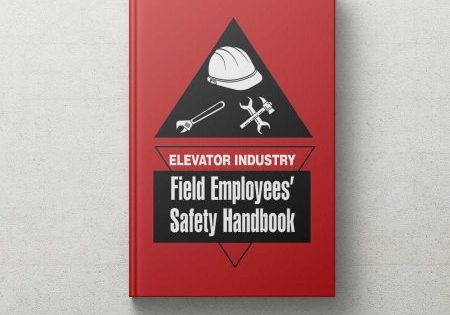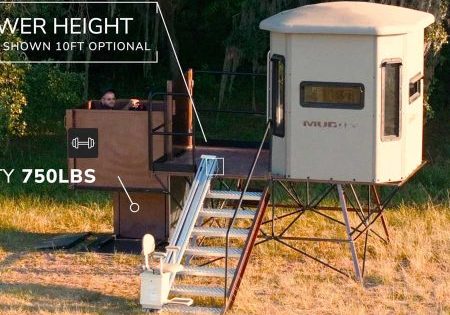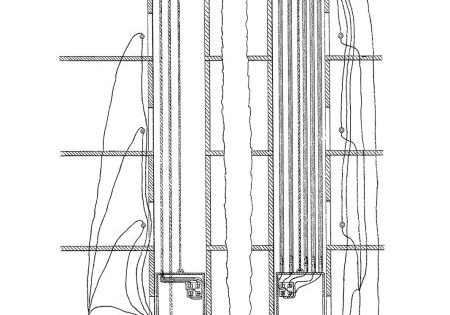Operating & Growing an Independent Company in a Consolidating Market
Mar 1, 2025

by John Mezzo
This paper was presented at the 2024 International Elevator & Escalator Symposium in Paradise Island, Bahamas.
Abstract
Dynasty Elevator is an independently-owned and -operated company based in NYC, one of the most active markets for consolidation in the U.S. in the vertical-transportation (VT) industry. Founded in 2019, the company just celebrated its fifth year in business. During its tenure, it has amassed more than 700 units on service and experienced exponential growth year-over-year (YOY). Dynasty Elevator has achieved this growth organically and without completing any M&As.
M&As are nothing new to the elevator industry; however, historically, they were predominantly completed by the four majors (Otis, KONE, TK Elevator and Schindler). Over the last few years, this has changed with the introduction of private equity (PE) firms into the VT industry. Some PE firms are consolidating companies directly, while others are working with privately held elevator companies to fund acquisitions.
As an independent company that is not completing M&As or working with a PE firm, we have a unique look at the marketplace and the impact consolidation is having. We not only see the changes in the market from a sales perspective, but we also see them on job sites as we add new units to our service portfolio. We see first-hand the different levels of maintenance being completed by various companies and the changes that occur on the back end of an acquisition.
This paper will discuss the risks in the industry that we see first-hand and the steps we take proactively to mitigate these risks, as well as the impact this consolidation has on business.
Introduction
The single most important deliverable from any company to their customers is a quality product, delivered safely. When it comes to the elevator industry, maintenance services are at the center of it all. Having a robust service base allows for reoccurring revenue and a customer base for repair and modernization. With service being the most critical facet of the business, performance in this area is crucial. There are several key contributors to the completion of maintenance, mainly:
- Safety and technical training
- Field technicians performing the work
- Supervisors overseeing the work
- Experience
As this industry is highly technical with its electro-mechanical nature and 150-plus years of existence, there is significant variation in the equipment that is running today as there is currently no code-mandated “shelf life” for an elevator. Elevators in the U.S. must only comply with the code in place at the time that it is installed. Any retroactive code change adopted by a given jurisdiction is typically geared around a single function of the elevator and not the entire system. Technological advances in control systems through the years in the absence of mandatory retroactive code changes lead to a significant array of equipment running in the field. This increases the value of experience and the need for training.
As companies are consolidated and restructured, large amounts of varying levels of experience and completed training are all put under one roof, and technicians are exposed to new equipment and new supervisors, as well as different company processes. From the independent company perspective, we see this same thing but on a smaller, individual scale. As we are continuously growing, we are also continuously hiring. We hire people from both union and nonunion shops and experience firsthand the variation in safety training and protocols that are out there. As we are hiring on a continuous smaller scale, we have more manageable onboarding and thus are able to drive our safety culture home to the new hires as soon as they come on board.
Integration
When an acquisition is completed, significant challenges follow as the new company is integrated into the parent company. Oftentimes, there are reductions in staffing in both the field manpower, as well as the supervisors and sales in the office.
There are two main methods for integrating a large number of new units to an existing service portfolio. One method is picking up route business that is just absorbed into the existing routes, and the second is picking up staffed business where the field manpower is maintained. When the route business is absorbed, this leads to larger routes on the existing technicians. This adds a significant and sudden number of buildings to a technician’s route. The technician is now tasked with not only maintaining his existing route, but several new buildings/units with which he or she is not familiar.
Technical Training
Technicians working in the field have all different types of backgrounds and levels of training. Technicians that are part of the International Union of Elevator Constructors (IUEC) go through an extensive schooling program, the National Elevator Industry Educational Program (NEIEP), which is a two-fold process. First, a technician passes a competency exam and then is initiated into the respective local where he or she waits for a position as an apprentice to open up. Once a spot opens, the technician is hired and begins working as an apprentice. Once a probationary period is completed, the technician begins the NEIEP program, which is four years. During the four-year period, the technician continues to work in the field as an apprentice. This is a great approach, as the technician experiences both classroom and on-the-job training, gaining exposure to all branches of the business (maintenance, modernization and new construction).
Technicians who come from other unions and/or nonunion shops come from different levels of training. In some instances, they work only in one branch of the business, such as modernization, and then when they are absorbed into a larger organization, they are tasked with working in other branches where they are less experienced, such as service. Moving from branches such as modernization or new construction into service poses a significant risk to safety, quality and performance.
Risk Mitigation
To mitigate the risks associated with technicians being absorbed into larger organizations and moving from branch to branch, training is critical. We find that a two-fold approach to training is beneficial. It goes without saying that safety is paramount and No. 1. But what is safety exactly?
Safety extends beyond just the personal safety of the technician; it includes the performance, quality and correctness of their work. This is critical to ensuring proper operation of the elevator, thus protecting the safety of passengers that we move every minute of every day. Safety programs, typically, focus mostly on the 9 Safety Absolutes that govern how technicians are to perform tasks on a daily basis to protect themselves. But what about the public? In order to also protect the public, Code training should also be integrated into the safety training programs.
The inclusion of Code training into safety training allows technicians to remain current on various parts of the Code. This is particularly important because a given technician might not be performing work on a regular basis that is governed by the entire Code. The Code is in-depth and specific, and maintaining training in this area ensures that technicians receive regular refreshers on topics they do not deal with on a daily basis but do encounter from time to time.
All technicians know how to safely access the top of an elevator, but do they know the proper engagement depth of an interlock beak into the lock housing?
Impact on Business
The VT landscape in NYC is unique for the U.S., as there are both union (IUEC Local 1 and International Brotherhood of Electrical Workers [IBEW] Local 3) and nonunion companies operating within one dense geographic area. The multiple sources of labor cause significant variation in labor costs across different companies, and these costs ultimately need to be managed. For example, if a nonunion shop is integrated into a union shop, then there is potential for a significant labor cost on units with fixed pricing. This variation in cost not only impacts prices in the marketplace, but also impacts the operations of the purchaser in an acquisition.
Throughout the integration process, it goes without saying that there is an impact to the business. As we have discussed, the quality of work being performed is impacted by route changes, system changes, supervision changes, culture changes and more. These changes can lead not only to a reduction in quality of work, but also missed maintenance visits, which has a particular impact on customer service. Additionally, there are customers who lose the “personal touch” that they have been accustomed to and/or have had relationships with the prior company and simply just prefer the smaller shop feel.
These changes can cause customers to return to the marketplace rather than continuously renew with the incumbent contractor they have been with for a long time. Customers do not always make changes; however, this return to the market provides many opportunities for an independent company.
Conclusion
Consolidation of companies throughout the industry has several advantages: larger pools of manpower, more pooled resources and abilities. These are all benefits to the end user; however, we would be remiss if we didn’t acknowledge that there is a road to travel from the start of the integration to service delivery that is on par with what customers had before. All of the changes that occur along the way can result in customers returning to the marketplace for their services. This is, however, a double-sided coin, as an integrated company now has access to significantly more resources, which can lead to improved service to the customer.
Get more of Elevator World. Sign up for our free e-newsletter.









